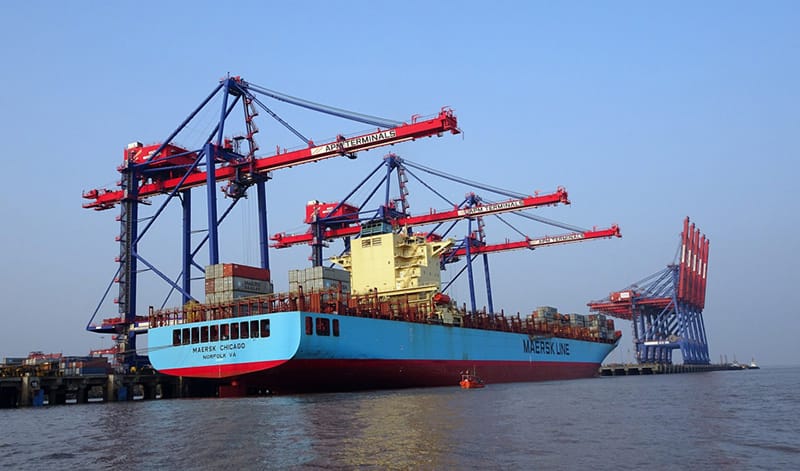
8 February 2021
World market development
World Market prices for sugar has continued its upward trend that started back in April. Raw sugar prices reached USc16.75/lbs in mid January while the price for white sugar reached USD467/mt, the highest levels since April 2017. A surprisingly persistent strong demand for Brazilian raw sugar, especially from China, has helped clearing out Brazilian stocks, despite an all-time high production level. Lower than expected crops in Thailand and the EU have done its part as well. More recently, a shortage of containers to shipped white bagged sugar has pushed the refining spread to USD108/mt, well above what is needed for standalone refiners to be profitable.
The harvest period is all but over in Centre/South Brazil and a maximum sugar/ethanol allocation coefficient meant a record production of 38.2 mill. mt. Second half of 2020 the cane growing regions were hit by dryer than normal weather and despite being good for the then on-going harvest it has had negative consequences for the upcoming harvest which officially starts in April. Brazil exports made another record in December with 3.0 mill. mt, totalling 26.5 mill. mt between April and December, 11.8 mill. mt higher than last year for the same period. January shipments are expected to reach at least 1.5 mill mt, in line with volumes shipped in January 2020. Brazil continue to benefit from a very attractive containers freight rates compared to Asian origins and hence we could see an increase of white sugar exports from Brazil in the coming months. Despite increasing domestic ethanol prices sugar remains about USc3/lbs more profitable for Brazilian mills than ethanol. This will translate into a maximum sugar mix from the millers for the coming cane harvest season, but the total production is nevertheless estimated to drop by 2.2 mill. mt to 36.0 mill. mt due the abovementioned drought. In a move to counter the effects mills are likely to start the new harvest as late as possible and thereby prolonging the period of limited raw sugar supplies.
In India, cane crushing has made strong progress and 14.3 mill. mt of sugar were produced by mid-January. This is 31% higher than last season, but slightly below the 18/19 season. The ISMA has released its second advance estimate based on satellite images of the cane areas and expect the production to reach 30.2 mill. mt during the 2020/21 season (excluding an estimated 2.1 mill. mt of sugar equivalent diverted to ethanol production), which is lower than 31 mill. mt estimated earlier. The ISMA is estimating domestic consumption for the year at 26 mill mt and exports at 6 mill. mt. The ending stocks for the season are therefore expected to decrease to 8.9 mill. mt, down from opening stocks estimated at 10.7 mill. mt. Following the export subsiding program announcement late December, about 2.5 mill. mt of exports have already been contracted. A large portion of that contracted sugar is dedicated to Indonesia Q1 and Q2 shipments following the freshly released raw import quotas.
The Thai harvest had a late start this season as farmers and mills are leaving the cane as long as possible in the fields to give it time to recover some of the lost yields – it was not until early January all 57 mills were fully up and running. Year-to-date sugar production is down 27% but production is likely to catch up somewhat in the coming month, but expectations of an even lower production volume than last year remain as farmers have favoured better paying crops like cassava. Market analysts expect production levels to increase in the next season but the range suggested is large at this point in time. As a consequence of the delayed start only 250k mt of sugar were exported during the month of December, which represents only about 35% of the volume exported the same month from previous season. Due to the last two consecutive low crops, sugar stocks are estimated as low as 1.2 mill. mt by the end of December. Therefore, Thailand export capacity for this season is estimated to equal just 1.1 mill. mt of sugar.
The Mexican sugar production surplus, thanks to a confirmed better production in the USA and therefore less import needs from Mexico, will become available to the rest of the world and is estimated to total 500k mt during for the current season.
Sugar analysts at F.O. Licht have reduced the supply/demand deficit for 2019/20 to 5.5 mill. mt. For the current 2020/21 season they have however increased their estimate for the deficit, compared with their previous 2020/2021 estimate, to 3.8 mill. mt for 2020/21, which means another year of a much needed draw down in global sugar stocks.The tighter balance will however inevitably lead to a period of high volatility in sugar prices as any supply disruption, be it lack of containers, delayed start of a crush or anything else not foreseen, will have a direct effect on price levels.

